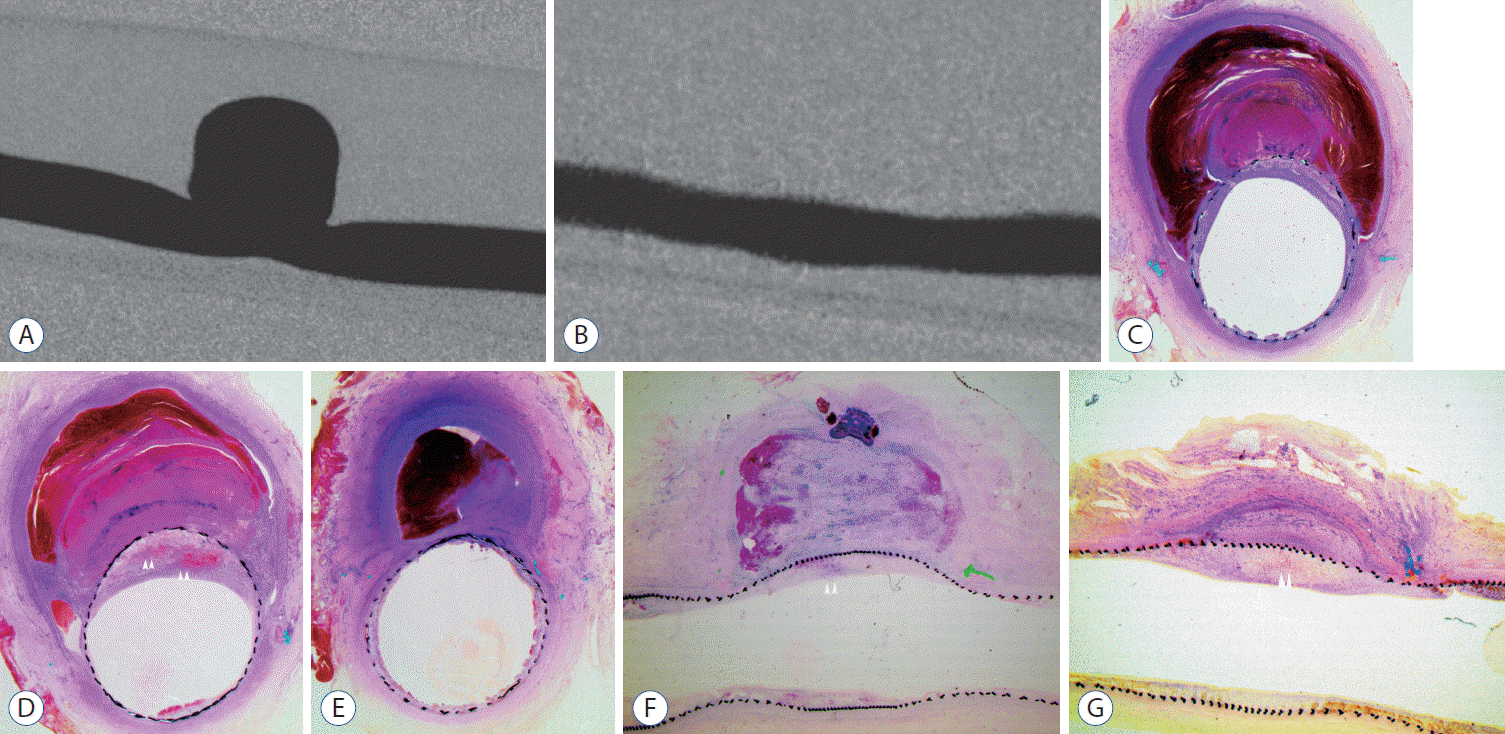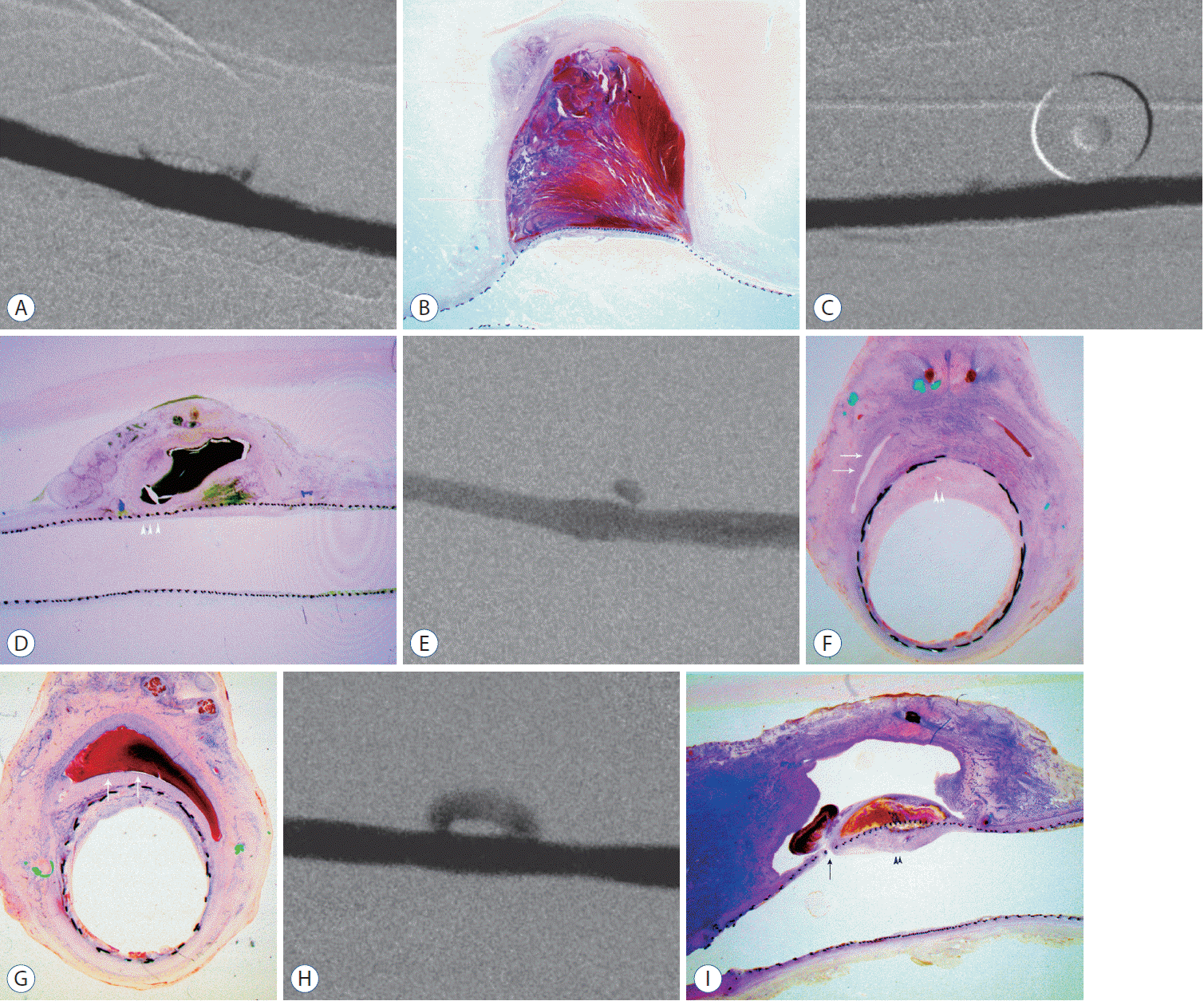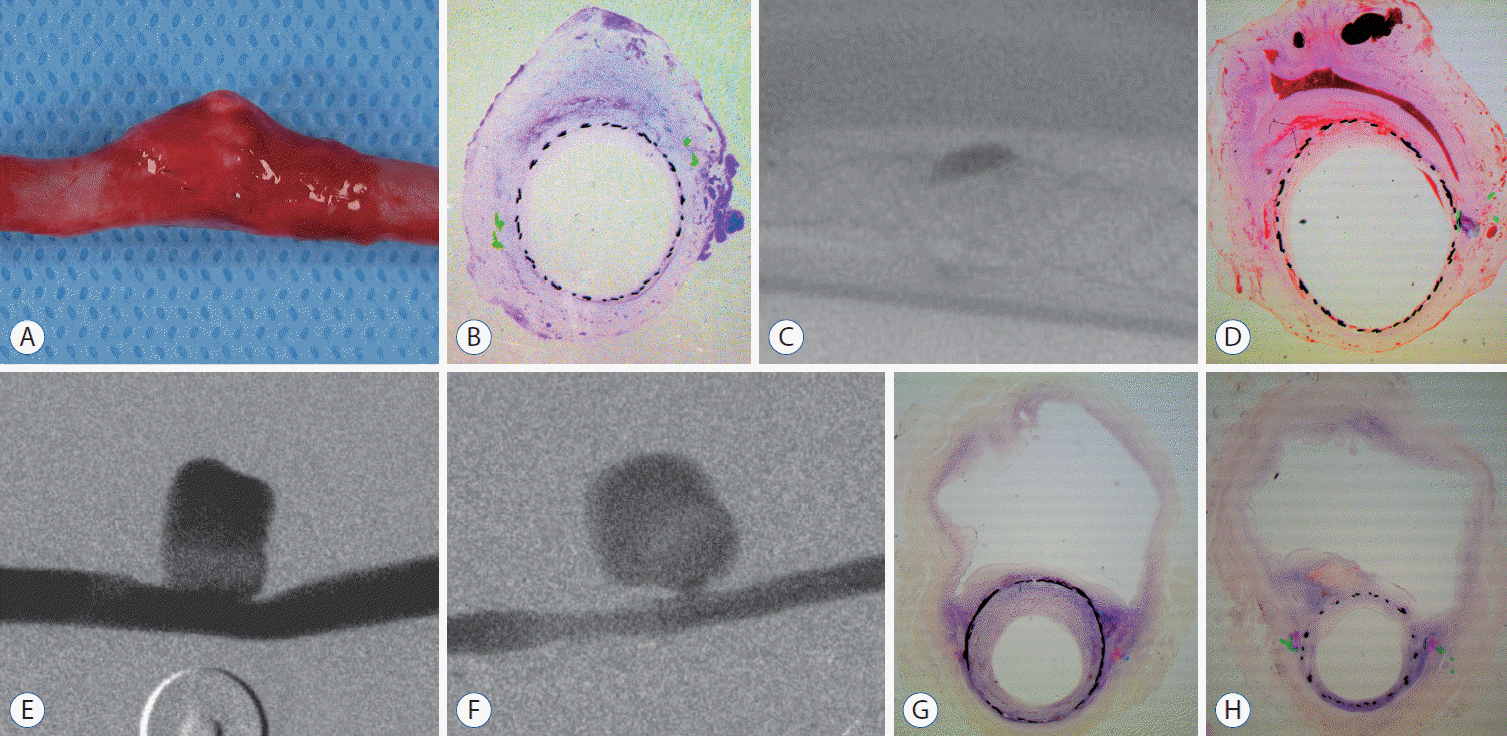INTRODUCTION
MATERIALS AND METHODS
Animal experiments
Flow diverter device
Stent implantation
Angiographic evaluation, follow-up and sacrifice of the animals
Tissue processing
Statistical analysis
Results
Angiographic findings
Table 2.
Table 3.
Histopathologic findings
 | Fig. 2.A : Pre-procedural common carotid arteriogram shows a large, wide-necked side wall aneurysm (aneurysm 5) B : Four weeks FU angiograph of aneurysm 5 shows complete occlusion of aneurysm. C-E : Photomicrographs of aneurysm 5. Proximal (C), mid (D), and distal (E) segment of coronal sections shows multi-staged thrombus formation in concentrically laminated fashion (C-E : H-E stain, ×40). F : Midline longitudinal section of aneurysm 19 shows the thrombi revealed as irregular, ill-defined laminations which are mainly composed with organized thrombus (H-E stain, ×40). G : Midline longitudinal section of aneurysm 15 shows a significantly shrunken aneurysmal sac, and small area of organized thrombus and attenuated cellular matrix with neointimal hyperplasia around an aneurysmal neck (H-E stain, ×40). Neointimal hyperplasia was shown in the mid-segment of aneurysm, and it contained organized blood clot (arrowheads in D and F). FU : follow-up. |
 | Fig. 3.A : Four weeks FU angiograph of aneurysm 20 shows near complete occlusion of aneurysm (grade III). B : Midline longitudinal section of aneurysm 20 shows that aneurysmal sac was filled with laminated thrombus various stages of organization (H-E stain, ×40). C : Four weeks FU angiograph of aneurysm 18 shows near complete occlusion of aneurysm (grade III). D : Midline longitudinal section of aneurysm 18 shows that it was shrunken in its size, and fresh blood clot surrounded by organized thrombus was shown. Distant between stent struts was relatively wide at the segment proximity to the fresh blood clot (arrowheads in D) compared with other segments. E : Four weeks FU angiograph of aneurysm 9 shows incomplete occlusion of aneurysm (grade II). F and G : Photomicrographs of aneurysm 9. Mid (F) and distal (G) segment of coronal sections shows that the aneurysmal sac was filled with multi-staged thrombus mainly composed of fresh blood clot (arrows in G) with small empty space (arrows in F) (G and F : H-E stain, ×40). H : Four weeks FU angiograph of aneurysm 16 shows incomplete occlusion of aneurysm (grade II). I : Midline longitudinal section of Aneurysm 16 shows small amount of organized thrombus along the stent strut with intimal defect (arrow in I) (H-E stain, ×40). Small amount of fresh blood clot was show adjacent to the intimal defect with large empty space of the aneurysmal sac. Neointimal hyperplasia was shown in the midsegment of aneurysm, and it contained organized blood clot (arrowheads in F and I). FU : follow-up. |
 | Fig. 4.A : Gross inspection of completely occluded aneurysm 13 (grade IV). It is significantly shrunken in its size. B : Photomicrographs of mid-segment of coronal sections (aneurysm 13) (H-E stain, ×40). Aneurysmal sac was significantly shrunken, and histopathology shows small area of organized thrombus and attenuated cellular matrix with thin neointima. C : Native plane radiograph of aneurysm 14 obtained immediately after 12-week follow-up angiography. It shows small amount of contrast stagnation at the aneurysmal neck (grade III). D : Photomicrographs of aneurysm 14. Mid-segment of coronal section shows significantly shrunken aneurysmal sac, and small area of sharp, crescentic fresh blood clot and attenuated cellular matrix with thin neointima (H-E stain, ×40). E : Pre-procedural common carotid arteriogram shows a large, wide-necked side wall aneurysm (aneurysm 4). F : Twelve-weeks follow-up angiograph of aneurysm 4 shows incomplete occlusion of the aneurysm, and neointimal formation with intimal defect at the distal segment of aneurysmal neck. G and H : Photomicrographs of aneurysm 4. Proximal (G) and mid (H) segment of coronal sections shows empty sac with small amount of variably organized thrombus formation at the fringe neck formed between aneurysmal wall and stent struts with intimal hyperplasia at proximal segment of aneurysm (G and F : H-E stain, ×40). |




 PDF
PDF Citation
Citation Print
Print




 XML Download
XML Download